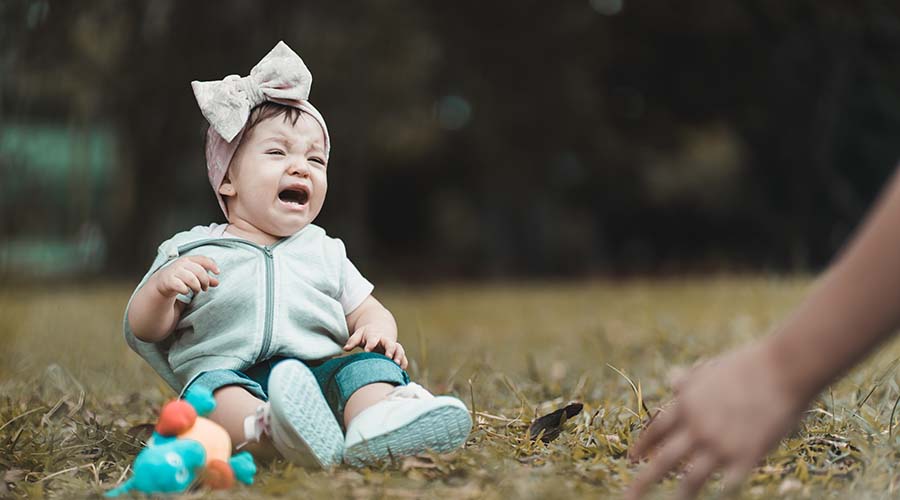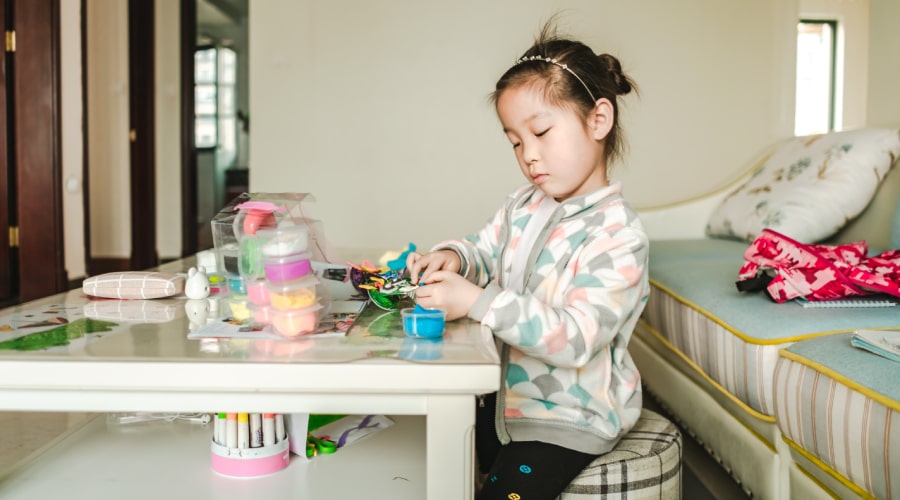settings
children
With Famly since
This article is about safeguarding against the physical abuse of young children and babies. It contains descriptors and signs of physical abuse of young children and babies, including “smacking”.
The prevalence of physical abuse of children
It’s a well-known fact that the number of children who are reported as being victims of child abuse is on the rise.
Characteristics of children in need data, collated annually and published by the Government, reveal that physical abuse (recorded as an initial category and resulting in a child being the subject of a child protection plan, in England) increased in 2022.
NSPCC data from 2021 concludes that ‘around 1 in 14 children in the UK have been physically abused’. Of course, this statistic accounts for children of all ages, but we know that children in the early years are at a higher risk because of their age, dependency upon caregivers, and their inability or limited ability to communicate their experiences with others.
Non-accidental head injuries particularly for children under two years of age dominate media coverage of child protection matters. Sadly, a large number of case reviews published since 2018 show that this most vulnerable group statistically dominates all overall age categories. Contributing factors within these reviews are non-accidental injuries and bruising in non-mobile infants.

Defining physical abuse in the early years
In 2015, the DfE described physical abuse as follows:
“Physical abuse is deliberately physically hurting a child. It might take a variety of different forms, including hitting, pinching, shaking, throwing, poisoning, burning, or scalding, drowning or suffocating a child. Physical abuse can happen in any family, but children may be more at risk if their parents have problems with drugs, alcohol and mental health or if they live in a home where domestic abuse happens.
Babies and disabled children also have a higher risk of suffering physical abuse.
Physical harm may also be caused when a parent or carer fabricates the symptoms of, or deliberately induces, illness in a child. Physical abuse can also occur outside of the family environment.”
When considering physical abuse and how we respond, detect concerns, and take action to address it, use the simple steps:
- Identify
- Help
- Protect
- Report
Identify - Recognising signs of physical abuse in young children
There are many forms of physical abuse in young children, and you may identify them by some of the following signs.
- Bruising, open wounds or injuries.
- Bruising around the mouth, particularly in small babies, indicating forced feeding.
- Hand marks/imprints of hand.
- Bruising on the arms, buttocks and thighs.
- Bite marks.
- Burns from objects such as cigarettes or blistered areas. These can suggest scalds, such as from immersing a child in hot bath water.
- Any bruising on a non-mobile baby, toddler, or child who is disabled or ill (and therefore immobile) should be viewed as suspicious.
- Broken blood vessels to the eyes. This can suggest shaking or trauma to the head, particularly in babies.
- A baby who appears unresponsive due to head trauma or injury.
A reasonable explanation for injuries?
We know that there may be reasonable explanations given by parents and carers as to why a child has been physically injured or harmed. This is where practitioners need to apply professional curiosity to establish what has happened. This will aid in determining the next steps or actions needed, to ensure a child is protected. We may become more concerned should the following situations arise.
- The parent or carer’s explanation for an injury is inconsistent with the injury.
- They change their mind about the reason for the injury.
- They cannot explain frequent or repeated minor injuries to a child.
- They have delayed seeking treatment for the injury.
- They have used different doctors or hospitals to treat the injury.
(Adapted from my book Developing Child-Centred Practice for Safeguarding and Child Protection. Strategies for Every Early Years Setting).

Help - Responding to physical abuse in early years practice
Strategies and systems that help identify physical abuse are vital tools to alert us to concerns.
Keeping and maintaining records of injuries that occur both in the setting and out of the setting, such at home or elsewhere, serve as an indicator to inform professional judgments and decision-making. These records can assist in building a picture of any suspicious activity that may indicate a child is being physically abused. Recording birthmarks on babies and young children furthermore helps to differentiate unsuspicious marks from those of potential intentional injuries.
The Safeguarding Practice Review Panel, which published recommendations on responding to bruising in non-mobile infants in their 2022 briefing, had a number of issues to raise and advice for those working with babies including the early years sector.
The report acknowledged that “The current evidence base is robust enough to support the conclusion that accidental bruising is uncommon in a baby who is not independently mobile, particularly in those who are younger, unable to roll and unable to crawl.’
The Panel, which is responsible for identifying and overseeing serious child safeguarding concerns in England, recommended that in all cases of bruising in children who are not independently mobile, two important actions should take place.
- A review by a health professional who has the appropriate expertise to assess the nature and presentation of the bruise, any associated injuries, and to appraise the circumstances of the presentation including the developmental stage of the child, whether there is any evidence of a medical condition that could have caused or contributed to the bruising, or a plausible explanation for the bruising;
- A multi-agency discussion to consider any other information on the child and family and any known risks, and to jointly decide whether any further assessment, investigation or action is needed to support the family or protect the child. This multi-agency discussion should always include the health professional who reviewed the child.”
The big ideas
“Smacking” or equal protection from physical assault?
The debate about smacking children continues to gather momentum, particularly in the UK. In recent years both Scotland and Wales have passed legislation making the physical punishment of children which includes smacking, a matter for the law. These Scottish and Welsh laws determine that children have the same legal protection against physical assault as adults. It’s quite remarkable that we would think that they wouldn’t, right?
However, England and Northern Ireland currently remain defiant on the subject, with English Government refusing to address the issue of smacking. They believe that to follow the lead of other countries in the UK and legislate against it, would be seen as creating a “nanny state” by removing freedoms from adults to smack their children, should they choose to.
This questions the motives and priorities of those reluctant to see smacking as a form of physical child abuse. Furthermore, it serves as a reminder of how societies normalise child abuse or de-sensitise themselves to the realities of abuse in children.
The NSPCC in their learning series ‘Why Language Matters: Improving safeguarding and child protection practice with words’ urges us to re-frame the language used when referring to smacking. They make the point that ‘if an adult hits another adult because they don’t approve of how they’re behaving, it’s described as physical assault. But when a parent takes the same action against their child, we’re more likely to describe it as ‘smacking’. They believe that removing the euphemistic term ‘smacking’ will serve to minimise the harm caused to children who experience physical assault from parents or carers.
This learning also draws upon the negative impact this has on children’s mental and emotional health and wellbeing given that it is perpetrated within the family context. It challenges the rhetoric encouraging a change of language in order to address the attitudes that surround physical assault as a means of punishment for children.
Protect - Taking action to help and protect a child
When we identify physical abuse in children, the action required should always involve reporting to statutory services such as children’s social care or the police. The duty to protect children from significant harm is clear and must be acted upon.
There is, however, a clear indicator that leads us to consider preventative measures and strategies (that sit within the context of early help or early intervention) for children and families where there are greater risks of abuse. This means that by being aware of indicators and factors that ally with child abuse, particularly in relation to parental experiences and circumstances, we are able to act sooner rather than later to prevent abuse from occurring in the first instance.
Learning from case reviews supports a better understanding of some of these contributing factors. Key findings from NSPCC’s ‘Learning for improved practice around working with children aged two and under’ offers insights on parents who ‘may need additional help meeting their babies' needs and keeping them safe’. This includes:
- Parents who have had adverse childhood experiences
- Parents with substance misuse problems, including using cannabis
- Parents with mental health problems
- Parents with disabilities and learning difficulties
- Young parents
- Parents who are care leavers
- Parents who are experiencing or have experienced abuse as an adult.
Understanding children’s lived experiences, including their lives at home, their wider family and community is important. Knowing who the significant adults in their lives are, the context of parent’s relationships, and new or ex-partners, gives insight with regards to any known risks to both the parent or the child. This is where the principles of professional curiosity apply and are put to best use.

Action to prevent abuse in early years settings
Physical abuse, as with any other type of abuse, can occur outside of the family home and this includes places where children are cared for by professionals, such as early years provision. The latest and amended version of Ofsted’s Early Years Inspection Handbook states Ofsted’s expectations that there should be an ‘open and positive culture’ towards safeguarding in settings and that providers are ‘vigilant, open and transparent, maintaining an attitude of ‘it could happen here’.
Early years settings must have a range of policies and procedures in place to ensure that staff working in them are suitable to do so and that regular and robust management systems are in place to ensure the ongoing suitability of staff. Whistleblowing policies should enable staff, volunteers, and students working in the setting to engage with them, to prioritise the best interests of children.
Report - How to share concerns about a child
All concerns about child abuse should be reported to the designated safeguarding lead who is responsible for taking timely action. They should speak with the relevant services with respect to taking advice or making a referral to children’s service social care.
Rachel’s Early Years Safeguarding Hub is an online resource and designated safeguarding lead learning community, provides managers with authentic content to build team compenties for all things safeguarding and child protection.
Rachel’s book Developing Child Centred Practice for Safeguarding and Child Protection: Strategies for Every Early Years Setting is available from Routledge with a 20% special discount offer for Famly customers - use code SME32.
Try learning journals for free
Add observations, and build digital learning journals to share with families instantly. All with your completely free 14-day trial.
Get started









